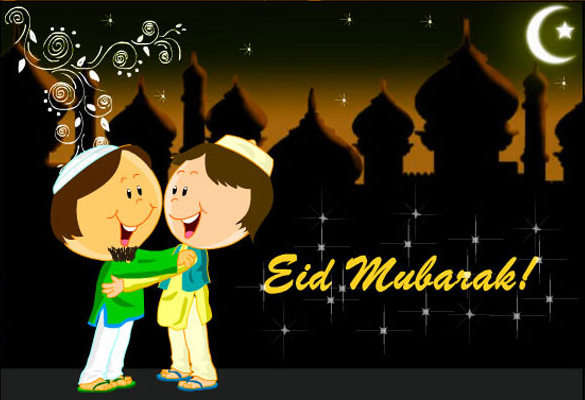
Tell Your Children Why Eid-ul-Adha Is Celebrated
24 Sep 2015 | 3 min Read
Natasha Jaorawala
Author | 1 Articles
Eid-ul-adha (or Bakri Eid, as it is popularly known) is significant for Muslims, as it symbolises the ultimate sacrifice (also known as “Qurbani”) that Prophet Ibrahim made in the way of ALLAH (God).
The story goes that Prophet Ibrahim was blessed with a son (named Hazrat Ismail) after many years of prayer. However, Prophet Ibrahim had a repeated dream that ALLAH desired that he sacrifice his son as a test of his faith and commitment towards ALLAH. Having great faith towards God, Prophet Ibrahim shared this dream with Hazrat Ismail and to his pleasant surprise, he agreed. Hazrat too, due to his faith and love for ALLAH, chose to obey his father and was ready to sacrifice his own life for the cause. To carry out this sacrifice, Prophet Ibrahim and Hazrat Ismail travelled a great distance and on the way the Satan (Devil) tried to discourage Prophet Ibrahim from making the sacrifice by whispering negative thoughts in his ear.
However, Prophet Ibrahim and his son remained unaffected. At the designated spot, he attempted to sacrifice his son with a knife. However, he was astonished to see that his son was unharmed. Instead, ALLAH had replaced his son with a goat. This way, Prophet Ibrahim passed ALLAH’s test. Muslims commemorate this ultimate act of sacrifice every year during Eid-ul-Adha.
Contrary to popular belief, the rituals on Eid-ul-Adha do not only involve sacrificing the goat. They usually start Eid-ul-Adha with early morning prayers. They not only pray for themselves and their loved ones but also seek forgiveness from the god and request him to accept their sacrifice. It is a great sight to see everyone in the house, including children, be well dressed and deeply engaged in prayer.
Subsequently, the elders of the family proceed to carry out the sacrificing of the goat. It is said that the goat must be very well treated and prayer should be recited for the goat before it is sacrificed in the name of ALLAH.
The meat from the sacrificed goat is generally divided into three parts – 1/3rd is retained by the family, 1/3rd is given to relatives, friends and neighbours and 1/3rd is given to the poor and needy.
So, the festival involves not only sacrificing something dear to you but also sharing that fondly with the loved ones and needy.
What could children learn the rituals on Eid-ul-Adha?
• Generally, children enjoy hearing to the story of Prophet Mohammed and saying the early morning family prayers.
• Children learn about the importance of faith in god.
• They learn that when doubts cloud your mind when you are on your way to accomplish a good deed, they must be driven away.
• They learn to be thankful for their good fortune and appreciate the importance of giving away something that they like, to the needy.
• Children learn to appreciate that festivals are not just about hoarding and enjoying all the goodies but must also be shared with near and dear ones.
A


Suggestions offered by doctors on BabyChakra are of advisory nature i.e., for educational and informational purposes only. Content posted on, created for, or compiled by BabyChakra is not intended or designed to replace your doctor's independent judgment about any symptom, condition, or the appropriateness or risks of a procedure or treatment for a given person.
